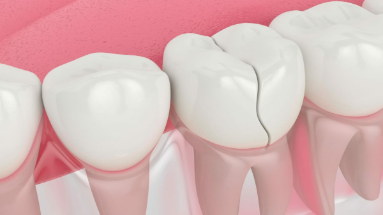Health
Is Suicide Selfish?
The Merriam-Webster dictionary defines stigma as “A set of negative and often unfair beliefs that a society or group of people have about something.” The social stigma associated with mental health has been a pervasive and long-standing problem. Many times, people suffering from a mental illness are perceive to have certain character traits. That are largely negative, such as being weak, unstable, or unpredictable. These misperceptions contribute to a lack of understand. The complexities of mental health issues, and can lead to further stigmatization and discrimination. The result is often an unwillingness to seek help or to create an environment of acceptance and understanding. It is vital that society recognize that mental illness is just as real, and often more complex.
Suicide Causes:
When an individual experiences physical or mental illness. Such as allergies, diabetes, flu, depression, anxiety, or PTSD. It is not a fault of character or a sign of weakness. Rather, these health issues are treatable, and often require professional medical or psychological attention. With the proper care and support. Individuals can learn to manage or even reduce the symptoms of their illness, and lead a life of stability and joy. Mental health issues are often complex, so it is important to seek out resources to ensure the best possible outcome. Treatment may include therapy, medication, lifestyle changes, or a combination of all of these methods. It is essential to receive the care necessary to address. These issues in order to move forward in a healthy and productive.
Why It Is Important To Stop Saying Suicide Is “Mean”?
Suicide is often stigmatized by people claiming it is mean. However, this is a false belief and should not be perpetuated, as it can be damaging to those who have attempted suicide, or survivors of suicide. There are a variety of complexities that contribute to a person’s decision to attempt suicide. And these complexities are often misunderstood. To better understand why someone might attempt suicide? It is important to consider the underlying issues that contribute to this decision. Such as substance abuse, mental health issues, or exposure to trauma. Additionally, suicide is not an impulsive act, as many people believe, but is usually the result of a long-term struggle with mental health issues.
Centers For Disease Control And Prevention (CDC):
The Centers for Disease Control and Prevention (CDC) has declared suicide a grave public health problem in the United States. Noting that it is the leading cause of death among adults. This sobering statistic was illustrated in 2020, when an estimated 12.2 million American adults seriously considered suicide, and 3.2 million developed a plan to do so. The CDC has issued a call to action to those at risk of suicide. Emphasizing the importance of seeking help and connecting with treatment options. As well as other supportive resources. Additionally, the CDC has developed several programs and initiatives to prevent suicide. Such as the National Suicide Prevention Lifeline, which provides round-the-clock access to crisis counselors for those in need of urgent assistance.
Helplines Support:
If you or someone you know is currently in an emotional crisis and needs immediate help. It is important to reach out and get support. The 988 Suicide & Crisis Lifeline provides 24-hour confidential support to anyone experiencing a suicide crisis, emotional pain, or distress. You can access this vital service by dialing 988 or texting HOME to 741741 (the Crisis Text Line). The 988 Suicide & Crisis Lifeline is staffed with trained professionals who are equipped to provide emotional support, crisis intervention, and referral services. It is important to take proactive steps to ensure your emotional wellbeing, and the 988 Suicide & Crisis Lifeline is a valuable resource for anyone in need of support.
Suicide Does Not Based On Anyone’s Age:
It is important to note that suicide does not discriminate against anyone based on age, gender, sexual orientation, or ethnicity. Although there is no one single cause that leads to a suicide attempt. The National Institute of Mental Health has identified a number of risk factors. That may contribute to suicidal thoughts and behaviors. These include mental health disorders, such as depression and anxiety, previous trauma and substance misuse. Specially family history of suicide, social isolation, and certain health conditions. Additionally, Certain life events such as the loss of a loved one or a job can increase the risk of suicide. It is also important to remember that a suicide attempt does not necessarily mean. That the individual was attempting to end their life; rather, it could be a way of expressing extreme emotions.
Risk Factors For A WideRange Of Health Conditions:
Risk factors for a wide range of health conditions, illness, and disease can vary greatly. But some risk factors are common among many types of health issues. These include: Lifestyle factors: such as smoking, poor diet, lack of exercise, and heavy alcohol consumption. Environmental factors: such as air and water pollution. Genetic, social and economic factors: including poverty, inadequate access to health care and lack of knowledge or awareness of health risks. Additionally, Certain medical conditions such as diabetes, heart disease and hypertension can increase the risk of developing other illnesses or complications. It is important to be aware of the potential risk factors so that individuals can take steps to reduce their risk and prevent the development of health problems. These includes:
- Mental Disorders: Such as depression, can have a detrimental effect on one’s overall well-being. These disorders can be characterized by feelings of hopelessness, sadness, and lack of interest in activities that were previously enjoyed.
- Chronic Physical Pain: Can lead to a variety of mental health issues. As pain can be both physically and emotionally draining. Furthermore, individuals with a personal or family history of suicide. Attempts may be more at risk of suicide ideation or attempt. Due to the increased risk of mental health issues.
- Substance Use: Such as drugs and alcohol, can also be associate with mental health issues. As the misuse of these substances can lead to an increased risk of addiction and depression.
- Exposure To Domestic Violence: Including physical and sexual assault. Has been linked to an increased risk of suicidal behavior in those affected. Those living in households where firearms are present, or where there is easy access to the means to end their lives, are also more likely to contemplate or attempt suicide.
- Those who are exposed to suicidal behavior from others, such as family, colleagues, peers, television shows, or celebrities. May be more likely to engage in suicidal behavior as a result. Finally, those who are victims of bullying or discrimination are also at greater risk for suicidal behavior due to the stress and emotional trauma these experiences may cause.
Affects Of Risk Factors:
The risk factors mentioned above increase suicide risk for individuals. But there are some other factors related to relationships, the community, and society. That contributes to suicide risk, according to the Centers for Disease Control and Prevention (CDC). These factors include a lack of access to healthcare, community violence, historical trauma, stigma associated with mental illness, social isolation, and more. While most people in the US may have access to healthcare and the other resources needed to prevent suicide. There are still many communities, especially those that are minority or socioeconomically disadvantage. That lack basic resources and are disproportionately affected by these risk factors. Moreover, individuals who are facing additional barriers due to their identity, such as race, gender identity, religion.
It is essential to acknowledge the various risk factors associate with suicide attempts. As research conducted by the Centers for Disease Control and Prevention (CDC) has highlighted. The CDC has notice that suicide is rarely cause by a single instance or event. But that numerous factors can contribute to a person’s decision to attempt suicide. These factors may include mental health issues, difficult life circumstances, and a lack of social support. Additionally, certain environmental and cultural factors: Such as access to firearms and the prevalence of negative attitudes toward mental illness .May also play a role in suicide attempts. It is important to be mindful of these risk factors and to take steps to ensure that individuals in need of help are able to access appropriate support services.

Is Suicide A Sign Of Personal Shortcoming?
Self-destruction is not a sign of personal shortcoming, a sign of weakness, or a selfish act. Rather, it is a complex phenomenon that is determined by a variety of factors. Including neurobiology, personal history, traumatic or violent events, and sociocultural environments. It is essential that we destigmatize the misconceptions about suicide to help individuals better understand. Why suicide can be a result of numerous and interrelated factors? This can help us to create more effective mental health awareness and suicide prevention initiatives. Furthermore, recognizing the complexity of suicide can help us to create better outreach initiatives to those who are in need of help and to provide more comprehensive mental health services. Destigmatizing the misconceptions about suicide can encourage more individuals to seek help.
Myths Regarding Suicide:
It is important. Differentiate between two different beliefs when discussing the idea of ending emotional pain versus wanting to die. The behavior of self-preservation, which typically includes avoiding injury and maximizing chances of survival, is something that many individuals do not wish to go against. What they are seeking to achieve is an end to the emotional pain they are experiencing, not necessarily death. The ways in which this is achieved vary from individual to individual and may include seeking help from mental health professionals, engaging in activities to distract from the emotional pain, or even just internally reorganizing and restructuring the way one views their emotional pain. In any case, it is essential to be aware of these beliefs and the differences between them.
An alarming number of individuals who experience suicidal thoughts are not able to access the resources they need to live a long, healthy life. Without access to mental health and social support services. Individuals who struggle with suicidal ideation are left to grapple with their thoughts and feelings on their own. This can be especially detrimental to their overall well-being, as their ability to make rational and sound decisions is often compromised. Unfortunately, this can lead to an attempt at suicide, which can have devastating consequences for the individual and their loved ones. It is important. Therefore, to ensure that those who are struggling with suicidal thoughts are able to access the appropriate support services to help them cope and lead a healthy life.
Those experiencing suicidal thoughts often care deeply for their families and friends. They may feel that their loved ones would be better off without them, and that they are a burden. Despite this perception, it is important to note that these thoughts and feelings are not indicative of selfishness. According to the Merriam-Webster dictionary: Selfishness is defined as “concerned excessively or exclusively with oneself: seeking or concentrating on one’s own advantage, pleasure, or well-being without regard for others.” In this case, the person’s concern for their loved ones is the primary motivator, rather than a self-interested pursuit. In fact, it is an act of love and care, as they are looking out for the well-being.
What To Replace?
The Centers for Disease Control and Prevention (CDC) outlines four protective factors for suicide prevention: individual, relationship, community, and societal. These protective factors are part of a comprehensive approach to prevent suicide. That includes identifying and supporting those at risk, promoting help-seeking behavior, and educating the public. Individuals can reduce their risk of suicide by creating and utilizing coping strategies to de-escalate. When they are in an immediate crisis. Friends and family can offer support by being compassionate, non-judgmental, and available to listen. Communities can also help by identifying and responding to the needs of those at risk and utilizing evidence-based practices in suicide prevention. Finally, the societal aspect of prevention involves advocating for suicide prevention policies, changing negative public.

Support Of Alvarado Parkway Institute:
The Alvarado Parkway Institute is dedicate to providing comprehensive mental health and intervention services. Our team of counselors, therapists, and experts are here to help guide our patients through a crisis. We understand that seeking help can be a difficult decision. We strive to make the process as comfortable and stress free as possible. If you find yourself in a mental health emergency, please do not hesitate to contact us by calling our 24-hour inquiry line at 619-333-7050. We remain committed to providing our patients with the highest quality of service and care.
Support Of National Suicide Prevention Lifeline:
If your child is having suicidal thoughts, it is imperative to take them to a local emergency room. You can call the National Suicide Prevention Lifeline at 1-800-273-TALK (8255). It is important to stay with your child until you can speak to a mental health professional; let them know that you are there for them and that you will get through this together. Ensure your child is in a safe environment and make sure they are not left alone until the mental health professional can provide further advice. If your child is in immediate danger, don’t hesitate to call 911. Additionally, it is important to seek support for yourself as well. You can seek out support from other family members, friends or through a support group.
Conclusion:
Suicide is inherently mean, as it places the individual’s own desires and interests above the well-being of their loved ones and the broader community. Others argue that it is not necessarily self-centered, as individuals who consider or attempt suicide may be in a state of extreme emotional distress or mental illness, and may not be capable of considering the impact of their actions on others.
Ultimately, the question of whether suicide is mean or not is a deeply personal and subjective one, and it is important to approach the topic with empathy, understanding, and a willingness to engage in open and honest dialogue. For those who are struggling with thoughts of suicide, it is important to seek help and support from mental health professionals, friends, and family members. There are resources available to help individuals work through their emotional pain and find hope and healing.
Frequently Asked Questions
Why do people say that suicide is selfish?
It is important to understand that suicidal individuals may not be thinking rationally and may feel that they are a burden to others or that their loved ones would be better off without them. Additionally, individuals who are struggling with suicidal thoughts may feel isolated and may not feel like they have anyone to turn to for help.
Can suicide be selfless?
It is not helpful to label suicide as selfless or selfish, as it is a complex issue that involves intense emotional pain and mental health struggles. Some individuals who die by suicide may feel that their death will relieve the burden on their loved ones or that their loved ones will be better off without them.
Suicide prevention involves creating a supportive environment for people who are struggling with mental health issues and providing access to resources for mental health support. This can include destigmatizing mental health issues, increasing awareness of the signs of suicide risk, and providing access to counseling, therapy, and other mental health services.



















